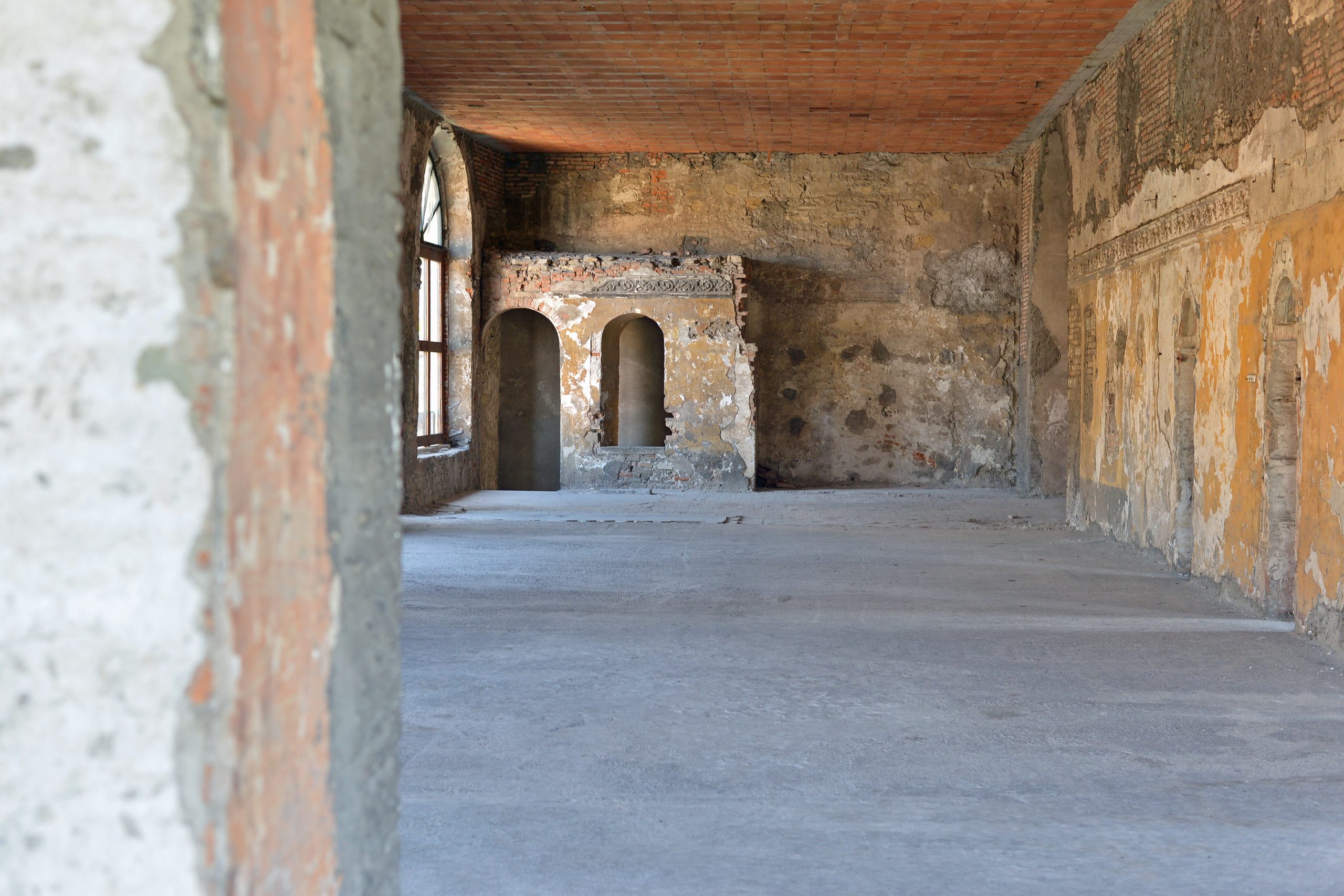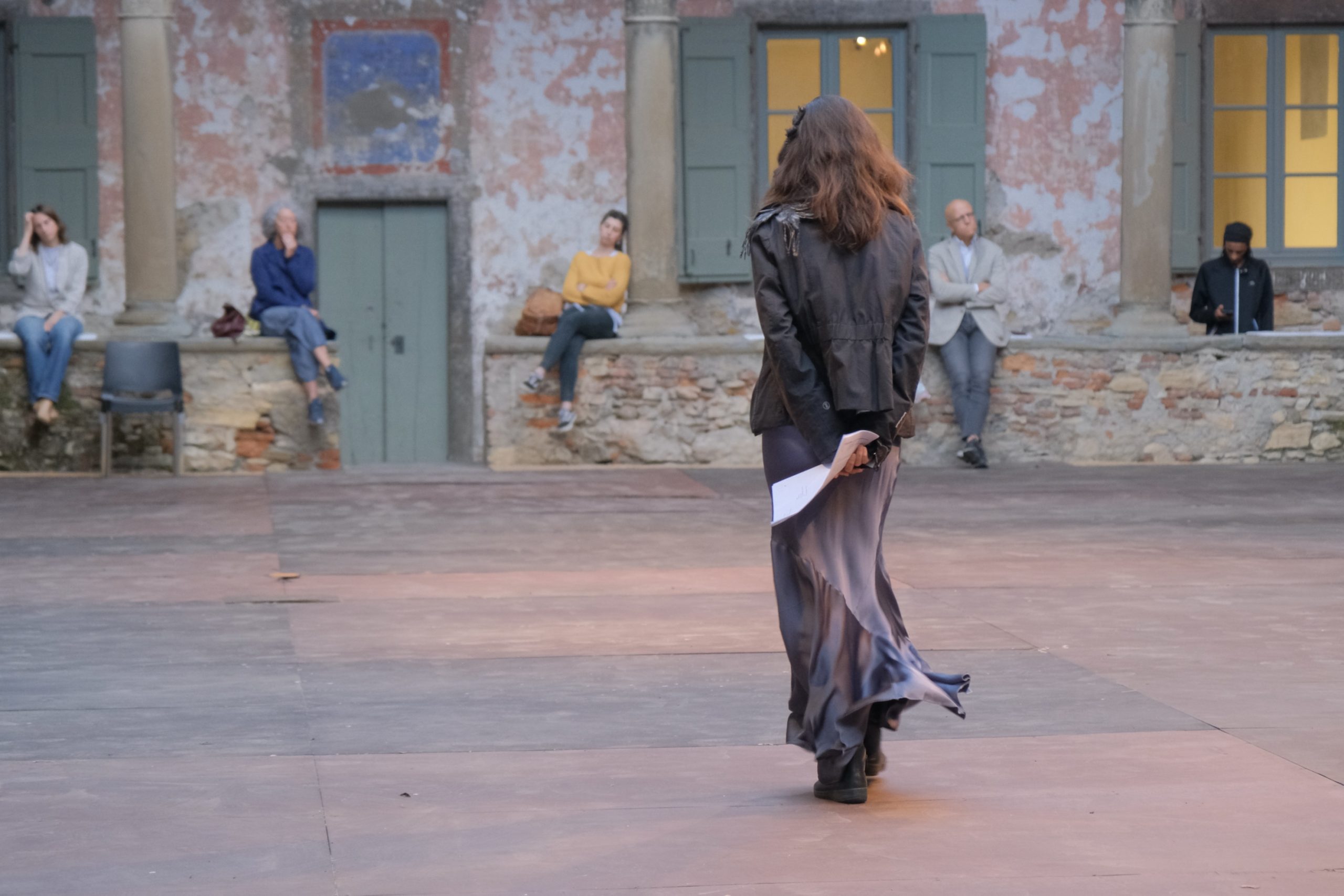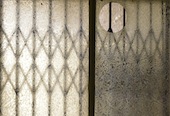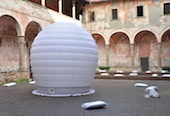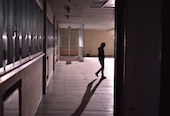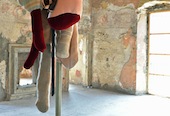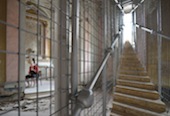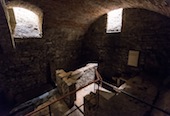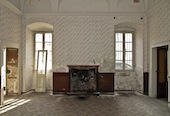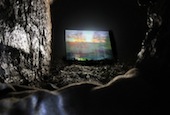CONTEMPORARY LOCUS 8
Contemporary Locus 8
Evgeny Antufiev | Atelier dell’Errore | Etienne Chambaud | Berlinde De Bruycker
Monastero del Carmine
June 25th – July 26th 2015
Via Bartolomeo Colleoni 19, Bergamo
Contemporary Locus opens a new exhibition project inside the Carmine, one of the oldest and most secret monasteries in the city of Bergamo, founded in the XVth century and then abandoned at the beginnings of the XXth century. For the first time, the monastery is a hub for art, theatre and music events, under the management of the Teatro Tascabile di Bergamo (TTB). In the last few years contemporary locus has opened to the public several hidden and forgotten sites in the city of Bergamo, a task accomplished when contemporary artists accepted to work in, with and for these sites.
contemporary locus 8, curated by Paola Tognon, invites three international artists – Evgeny Antufiev (1986), Etienne Chambaud (1980), and Berlinde De Bruyckere (1964) – along with the Atelier dell’Errore, a so-called ‘social sculpture’, a relational art project at the service of child neuro-psychiatry, devoted for the last thirteen years to the drawing of animals.
The site, its history, and the concurring theme of Expo 2015 have led the 8th edition of contemporary locus to focus on the relationship between humans and animals, from the perspective of art.
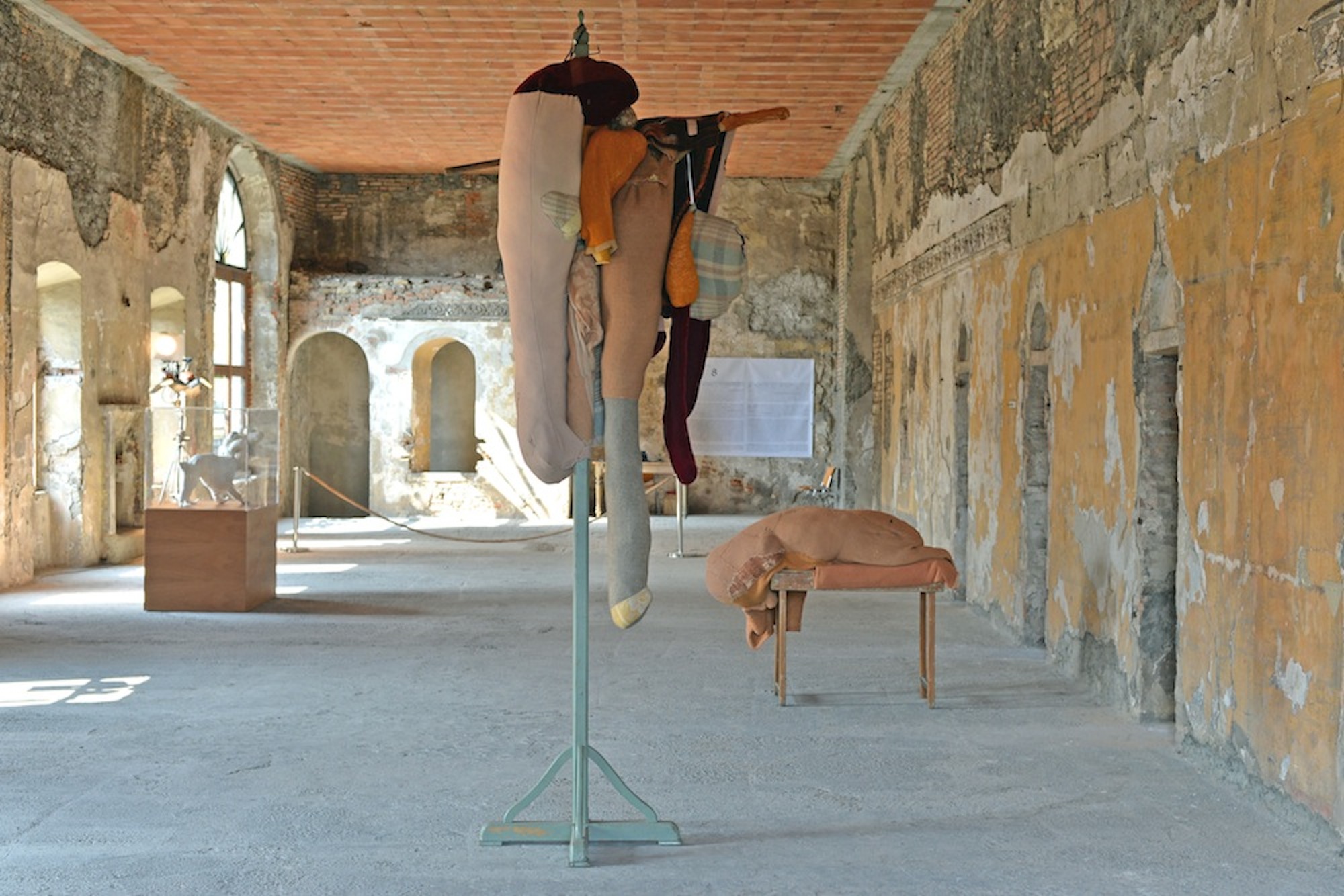

Berlinde De Bruycker, Evgeny Antufiev, Etienne Chambaud
Installation view of Contemporary Locus 8, Hall 1, Monastero del Carmine, Bergamo
Courtesy Contemporary Locus
ph Mario Albergati
The exhibition is the result of a selection of works that hint at contradictions and phantoms, anthropomorphisms and arts and crafts, and hence cast a new light on concepts such as belonging and difference.
The focus of the exhibition heralds and involves the time an entity becomes domestic and cultural – that is, the moment when preys may become hunters, and hunters preys – and highlights how thin the edge between humans and animals is. When addressing magical animals, or animals that keep their wild nature, the human species projects its anxieties, wishes, rebellions and aggressions against those things that look difficult or impossible to understand or tolerate. Every time, these projections help make the difference in our self-identification process against ‘the other’ or conversely undermine that difference – in so far as preys may become hunters, and hunters preys.
contemporary locus 8 takes place in a site that has never been opened to the public: the wide rooms at the piano nobile of the Carmine Monastery. Etienne Chambaud’s Contre-Dépouille (Undercut, 2012) presents itself an art barrier made of reverse python leather, is displayed at the entrance of the first wing. It compels visitors to ponder, before crossing the exhibition’s threshold. Evgeny Antufiev’s Untitled (2013), located in the same room, is a powerful reconstruction-representation of an exchange among history, imagination, anthropology and memory. At the far end of the wing facing a panoramic view, two landmark works by Berlinde De Bruyckere (Animal and Z. T., 2003) remind us of the aching and never-ending transformation of our bodies.
The second room, orthogonal to the first, is where the Atelier dell’Errore holds sway. The Atelier has always been keen on representing magical animals. Large drawings, and a purpose-made video, feature the anthropophagous animals that have starred as mental and visual creations in the work of the Atelier for more than twelve years.
The wide gallery that was the main entrance to the Monastery belongs to different properties, and has been closed for centuries. Now it’s accessible again.
The exhibition and the exploration of the site are accompanied by the contemporary locus 8 free app for Iphone and Ipad, developed by Elisa Bernardoni, with both Italian and English texts and images to expand on the works, artists and history of the location.
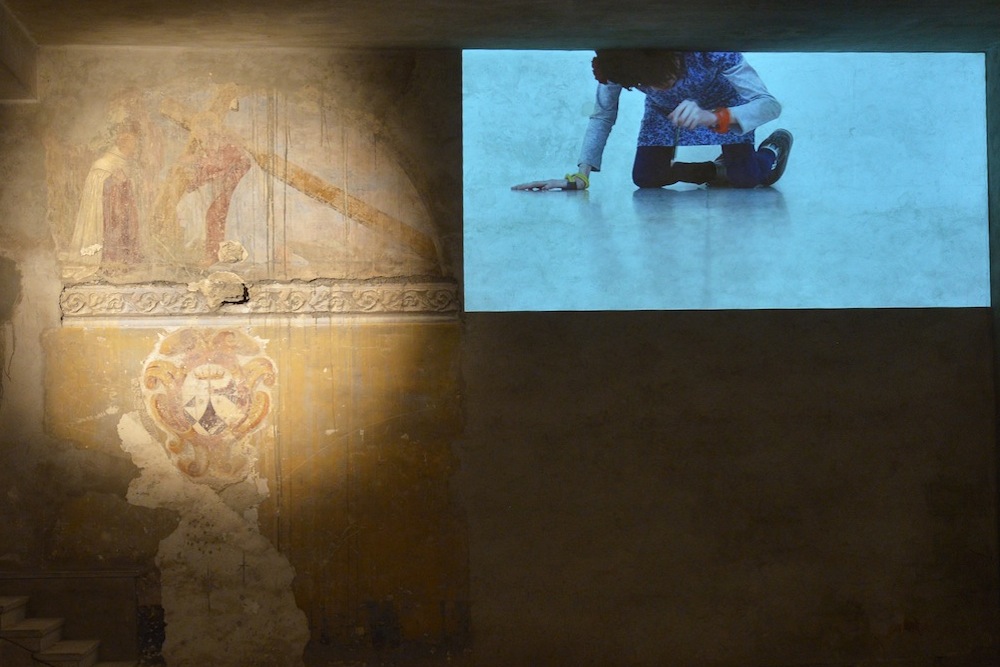

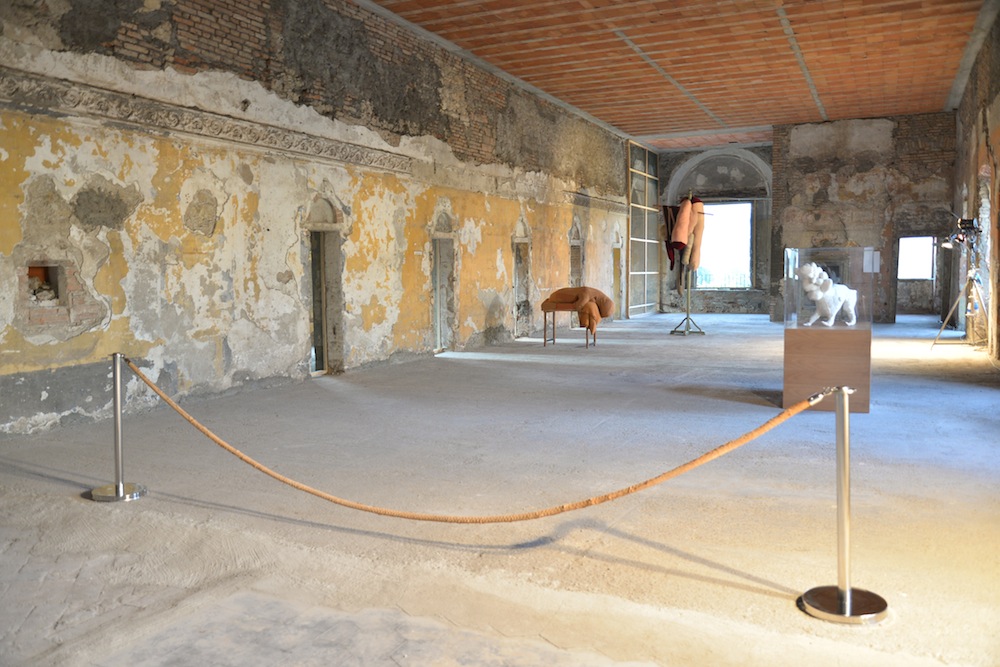

Atelier dell'Errore, Luca Santiago Mora
The Fairy Queen, HD 9'30'' 2015
Place specific installation, foreground, Monastero del Carmine, Bergamo
Courtesy Atelier dell’Errore and Contemporary Locus
ph. Mario Albergati
Etienne Chambaud
Contre Dépouille (Undercut), 2012
Seba phyton skin, rope, steel poles
90 x 230 cm, 4 cm (rope)
Courtesy AGI Verona Collection
ph. Mario Albergati
Evgeny Antufiev
Born in 1986 in Kyzyl, in the Republic of Tuva (Russia), he Lives and works in Tuva and Moscow.
From 2008 a student at the Institute of Contemporary Art (ICA Moscow). The winner in the ‘Young Artist. Project of the Year’ category of the Kandinsky Award 2009. Selected solo exhibitions: Twelve, wood, dolphin, knife, bowl, mask, crystal, bones and marble – fusion. Exploring materials, Collezione Maramotti, Reggio Emilia, 2013; Material Research: Absorption, Regina Gallery, Moscow, 2012; Shining (with Ivan Oyuon), Gallery White, Moscow, 2011; Bones, Gallery White, Moscow, 2010; Wings of horror, Navicula Artis Gallery, St. Petersburg, 2010; Myths of My Childhood, Globus Gallery, Loft Project ETAGI, St. Petersburg, 2009; Objects of Protection, ‘Start’ space at the Winzavod Center for Contemporary Art, Moscow, 2008. Selected group exhibitions: Ostalgia, New Museum of Contemporary Art, New York, 2011; Needle work, Proun Gallery, Moscow, 2009.
Etienne Chambaud
Born in 1980 in Mulhouse (France), he lives and works in Paris.
His work reflects on the nature of artworks, their relations with other works, their contexts and reasons why objects appear, the way they are used and perceived. Selected solo exhibitions: Counter History of Separation, Museo de Arte Carrillo Gil, Mexico City, 2014; The Naked Parrot, Labor, Mexico City, 2013; Undercuts, Galerie Bugada & Cargnel, Paris, 2012; The Enchored Separation, Art Unlimited, Basel, 2011. Selected group exhibitions: After Dark, Mamco, Geneva, 2015: Anthropocène Monument, Les Abattoirs, Toulouse, 2014; Dort wo unsere Sprache endet, komme ich jeden Tag vorbei, Kulturzentrum bei den Minoriten, Graz, 2014; Poltergeist, Les esprits frappeurs, Théâtredes Amandiers, Nanterre, 2014; The Go-Between, a selection of emerging international artists from the Ernesto Esposito collection, Sprovieri, London - Museo di Capodimonte, Napoli, 2014; Une Histoire. Art, architecture et design des années 1980 à nos jours, Musée national d’art moderne Centre Pompidou, Paris, 2014.
Berlinde De Bruyckere
Born in 1964 in Gent (Belgium), where she lives and works.
Selected solo exhibitions: Berlinde De Bruyckere, SMAK, Gent, Belgium, 2014; Berlinde De Bruyckere, Gemeente Museum Den Haag, The Hague, Holland, 2014; San Sebastian, Rubenshuis, Antwerp, Belgium; Berlinde De Bruyckere, Kunsthaus Graz, Austria, 2013; Kreupelhout, Belgian Pavillion, 55th Venice Biennale, 2013. Selected group exhibitions: Berlinde De Bruyckere – Philippe Vandenberg, Innocence is precisely, never to void the worst, Maison Rouge, Paris, France, 2014; Through the Looking Glass, ME Collectors Room, Berlin, Germany, 2012; De Nieuwe Gouden Eeuw – The NewGolden Age, Monastery of Bornem, Belgium, 2012; Human Capsules. Eight Female Artists from the Ursula Hauser Collection, Lokremise, St. Gallen, Switzerland, 2012; Memories of the Future, The Olbricht Collection, La Maison Rouge, Paris, France, 2011; Zwei Sammler. Thomas Olbricht und Harald Falckenberg, Deichtorhallen Hamburg, Germany, 2011; Collection Antoine de Galbert, Musée des Beaux-Arts de Lyon, Lyon, France, 2011; Tra. Edge of Becoming, Palazzo Fortuny, Venezia, 2011; Venetian and Flemish Masters, Bozar, Brussels, Belgium, 2011; Flemish Masters, That’s Life, Andrea Rosen Gallery, New York, 2011; Shape of things to come, Saatchi Gallery, London, 2011.
Atelier dell’Errore
The Atelier dell’Errore was founded in 2002 at the initiative of visual artist Luca Santiago Mora for the children in the care of the Reggio Emilia children’s neuropsychiatry department.
In 2011 the Atelier became an ONLUS (non-profit organisation) at the will of the parents and children attending the Atelier, aiming to promote the work done in Reggio Emilia and propose the experience gained to other similar situations in Italy. In 2013 the Atelier was inaugurated also in Bergamo, at the city’s children’s neuropsychiatry department. Recently the Atelier dell’Errore BIG was founded, a specialist training and vocational school working in the field of Visual Arts, open to those who attended the Atelier dell’Errore for many years and who, turning 18, no longer have the possibility to continue the activities and cultivate their artistic talents here. Atelier dell’Errore BIG is self-funded through projects linked to the world of the visual arts, publishing and image, and since January 2015 has been housed at the Collezione Maramotti in Reggio Emilia.
Atelier dell’Errore has taken part in many contemporary art exhibitions and events in Italy and abroad: in 2014, Giulia Zini won the contest Edward 6, Art in Disability, an international prize awarded every four years by Augustinum Stiftung and Buchheim Museum (Munich).
At the Atelier the drawings are often created in groups, so the works can be defined a collective artistic production; an interpersonal experience, a kind of social sculpture.
There are just a few, strict rules at the Atelier: no rubbers – every mistake has its value – and animals are the only subject of the children’s works.
Luca Santiago Mora
Nasce a Bergamo nel 1964. Vive e lavora tra Bergamo e Reggio Emilia.
Dai 18 anni opera con la fotografia, il video e installazioni site-specific esponendo e pubblicando in Italia e all’estero. Dal 2002 Luca Santiago Mora progetta e conduce l’Atelier dell’Errore, un laboratorio di arti visive dedicato alla neuropsichiatria infantile che si è rivelato ben presto, nella teoria e nella pratica, un valido sostegno alla clinica.
Monastero del Carmine
The Carmine Monastery is clear evidence of the historic layers and their superimposition in the urban texture of the Upper Town. The building went through several construction stages, from the early XIVth century when the Humiliati friars had a church built over remains of the ancient Roman walls. The church passed on to the Carmelites in 1357, to be renovated and enlarged one century later. It was then that the Monastery took on its layout.
The structure underwent ongoing renovations since the early XVIth century. The church of Saint Agatha of the Carmel, originally XVth-century, was given Baroque decorations by Giovan Battista Canina. The wings that hosted the friars’ cells also underwent modifications and renovations, and were lastly turned into the two current wide rooms at the eastern and the southern ends of the piano nobile.
The Carmelites abandoned the Monastery in the IXXth century and decay set in throughout the XXth century. It was only from the 1970s that structural works were carried out. The building was included in a detailed plan of recovery of the Upper Town, complying with environmental, cultural, and historical-artistic protection standards. A restoration plan to give the Monastery new functions, is still on hold. The cloister and some rooms on the ground floor, however, have been reopened and put to good use since 1996, thanks to the TTB – Teatro Tascabile di Bergamo. The TTB headquarters are located here, and act as a research and education center to promote contemporary theatrical culture.
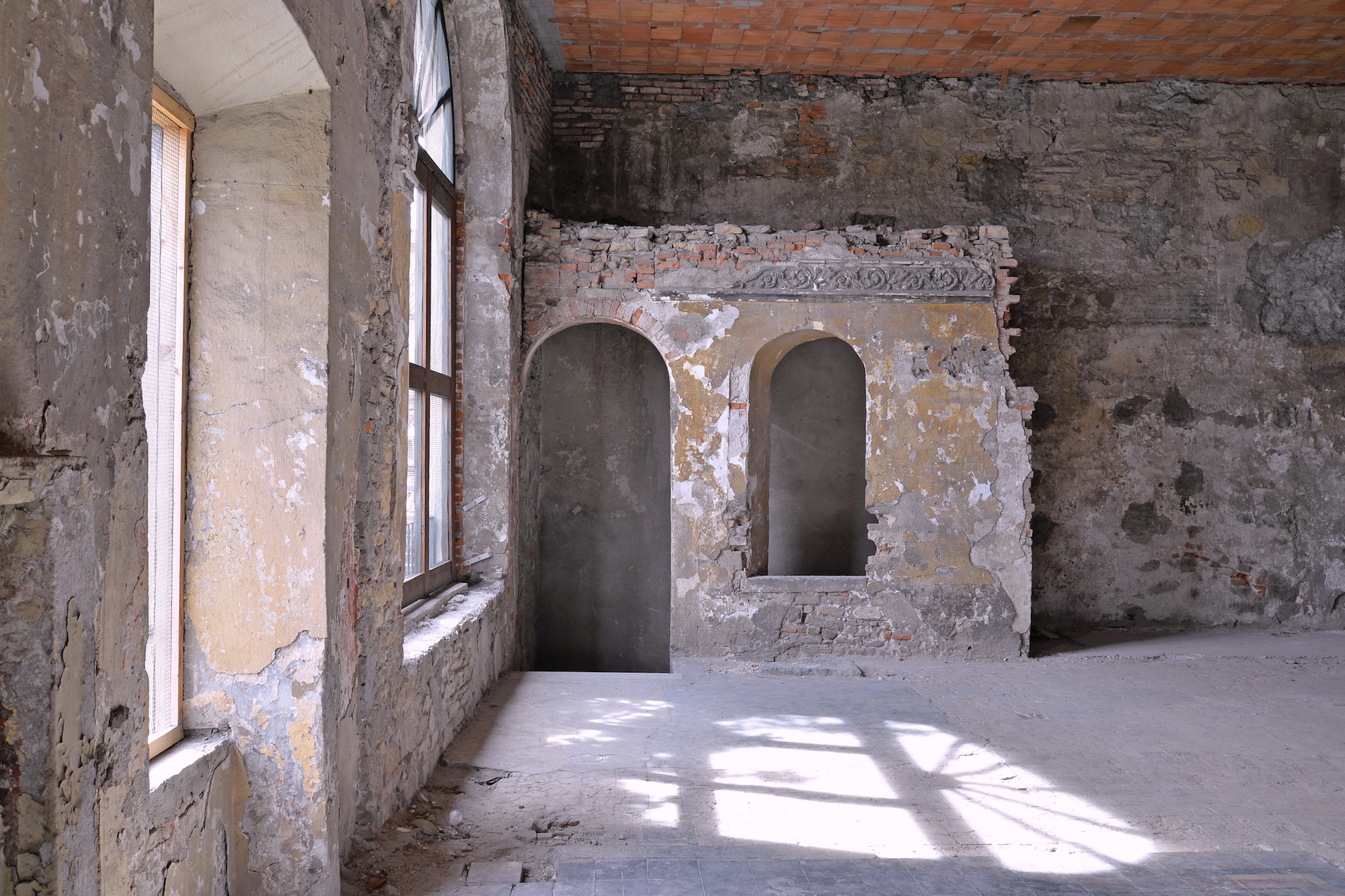

Contemporary Locus 8
Monastero del Carmine, Bergamo
Ph. Mario Albergati
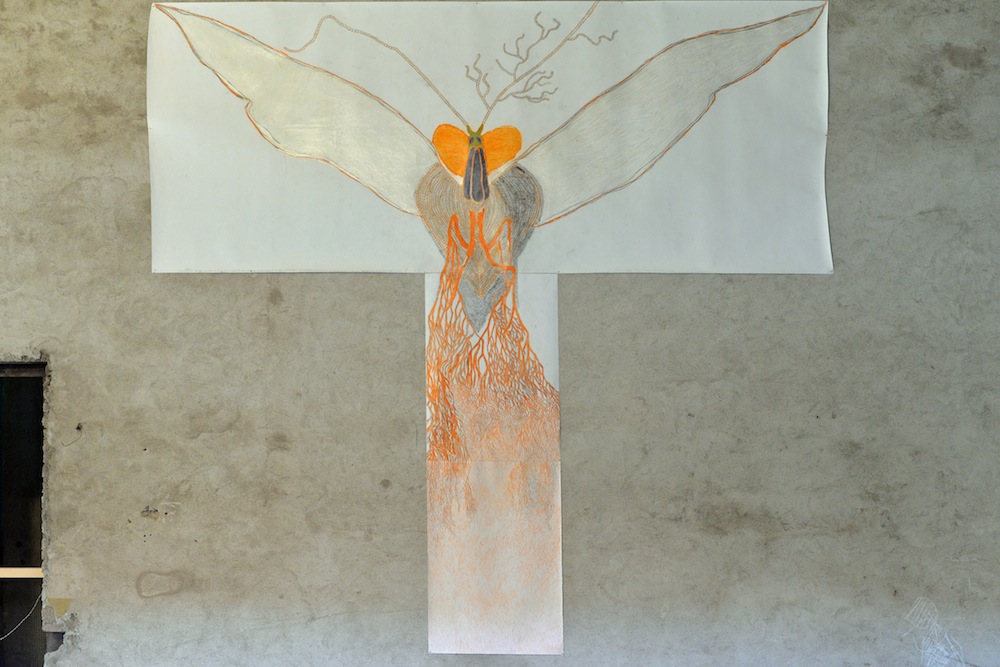

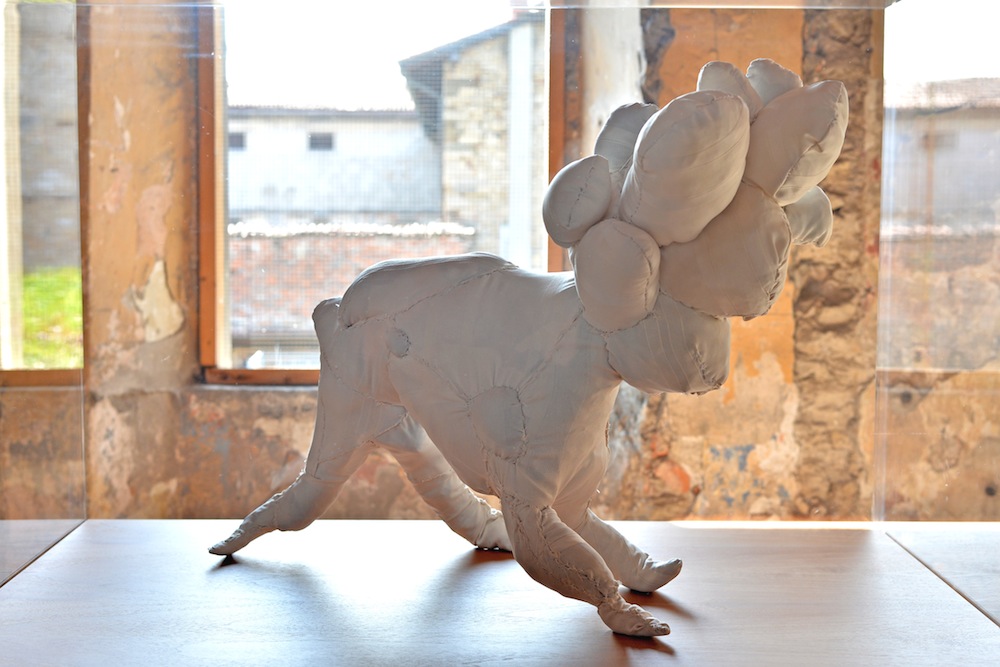

Atelier dell’Errore, various artists
Insetto carnecife dell’amore mannaro.
Fa innamorare le persone pure di quore le intrapola in un uovo di ragnatele e cuando sono morte di soffocamento srotola l’uovo come carta igienica e fa una carnecifica, 2015
mixed techniques on paper
Ph. Mario Albergati
Evgeny Antufiev
Untitled, 2013
Fabric, wire
65 x 65 x 36 cm
Courtesy Collezione Maramotti, Reggio Emilia
Ph. Mario Albergati
